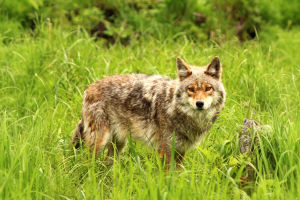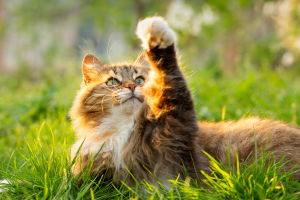Have you ever heard of the miniature deer that inhabits the cold mountains and lush forests of southern Chile? It's called the huemul, one of the smallest deer species in the world, and it's facing an urgent battle for survival.
With fewer than 2,000 of these beautiful and fragile creatures left, several environmental organizations and NGOs have stepped up to protect them. Let's dive into the story of this elusive animal and the efforts being made to save it.
Huemul's Struggle for Survival
According to the International Union for Conservation of Nature (IUCN), the huemul is listed as endangered. The species is one of the 21 native deer species found across the Americas. However, it faces the greatest threats to its survival, mainly due to overhunting, habitat destruction for livestock farming, and diseases. It's been a constant struggle for the huemul, with its population dwindling dramatically over the years.
Where Do Huemuls Live?
The huemul, also known as the Andean deer, is found exclusively in the Andes mountains of Chile and Argentina. This makes the huemul the southernmost deer species in the world. The indigenous Mapuche people refer to the huemul as "wümul" in their native language. These animals are unique, living only in the remote forests of the Andes, but their habitats are rapidly shrinking due to human activities.
Physical Description of the Huemul
Male huemuls are easily recognizable by their two forked antlers, which grow to around 30 cm. Their body length is less than 165 cm, and females are even smaller. Their weight typically ranges from 40 to 100 kg. Their fur is thick and dense, changing color depending on the season, ranging from beige to dark brown. This fur not only protects them from the cold but also helps them camouflage in their rocky, forested environment.
Efforts to Protect the Huemul
The huemul's numbers have plummeted, and today, these deer live in small groups of 2 to 3 individuals in remote areas. Some choose to live alone. But all is not lost. Environmental efforts to save them have been ramping up in recent years.
In 2010, Chile and Argentina signed a Memorandum of Understanding on huemul conservation. This led to the development of a bi-national action plan focusing on three main areas: working with local communities that live alongside the huemul, creating conservation actions, and monitoring the species' key challenges.
Documentary Raises Awareness
One key effort to raise awareness about the huemul is the documentary Huemul, the Shadow of a Species. Produced by Argentine Angelito Cruz Diablo and Chilean NGO Aumén, this documentary follows the huemul through its life cycle, capturing moments previously unseen, such as mating and pregnancy. It's not just a visual treat; it aims to show the importance of protecting this endangered species.
Rodrigo López, the head of Aumén, explains that the documentary will help raise public awareness about the huemul and encourage people in Chile and Argentina to protect this animal. After all, as the saying goes, "we only care about what we know."
Efforts from Governments and NGOs
In Chile, a law passed in 1996, the "Decree 19473," strictly prohibits the hunting, capture, and sale of huemuls. Additionally, Chile's National Forestry Corporation (CONAF) has implemented the Huemul National Protection Action Plan, which provides care and protection in 13 national parks. In Argentina, six parks offer the same protection, contributing to a collaborative effort to prevent the extinction of the huemul.
Comparing the Huemul and Other Endangered Species
Interestingly, the pudu, the second smallest deer species in the world, also faces threats. Native to the Andes, it shares some of the same challenges as the huemul, such as habitat loss. Both species are listed as endangered, and their future is uncertain without further conservation efforts.
Conclusion: A Call to Action
The fight to save the huemul is ongoing, but there is hope. By supporting documentaries, conservation projects, and laws that protect these animals, we can ensure that future generations will be able to witness the beauty of the huemul in the wild. The current efforts are a step in the right direction, but they need all the support we can offer. So let's stay informed and continue to care for these unique animals, before it's too late.
Let's continue to protect the world's rarest species, Lykkers! What do you think we can do to help raise awareness for endangered species like the huemul? Feel free to share your thoughts!


